Billy Porter Arrived a Long Time Ago. The World Finally Caught Up.
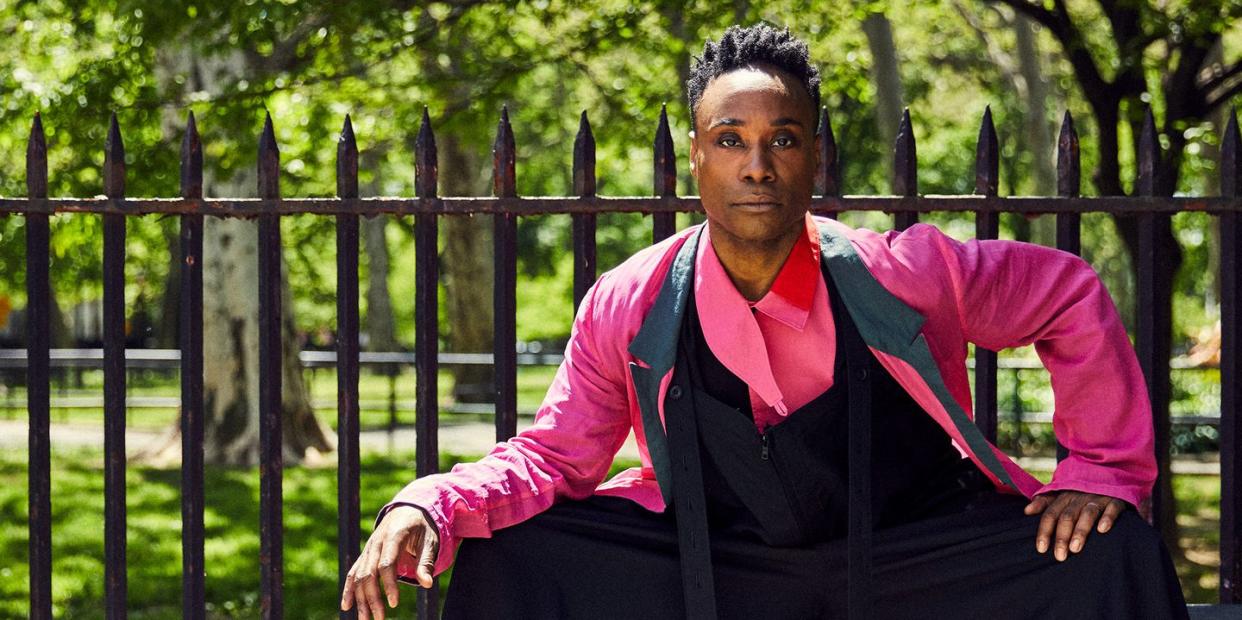
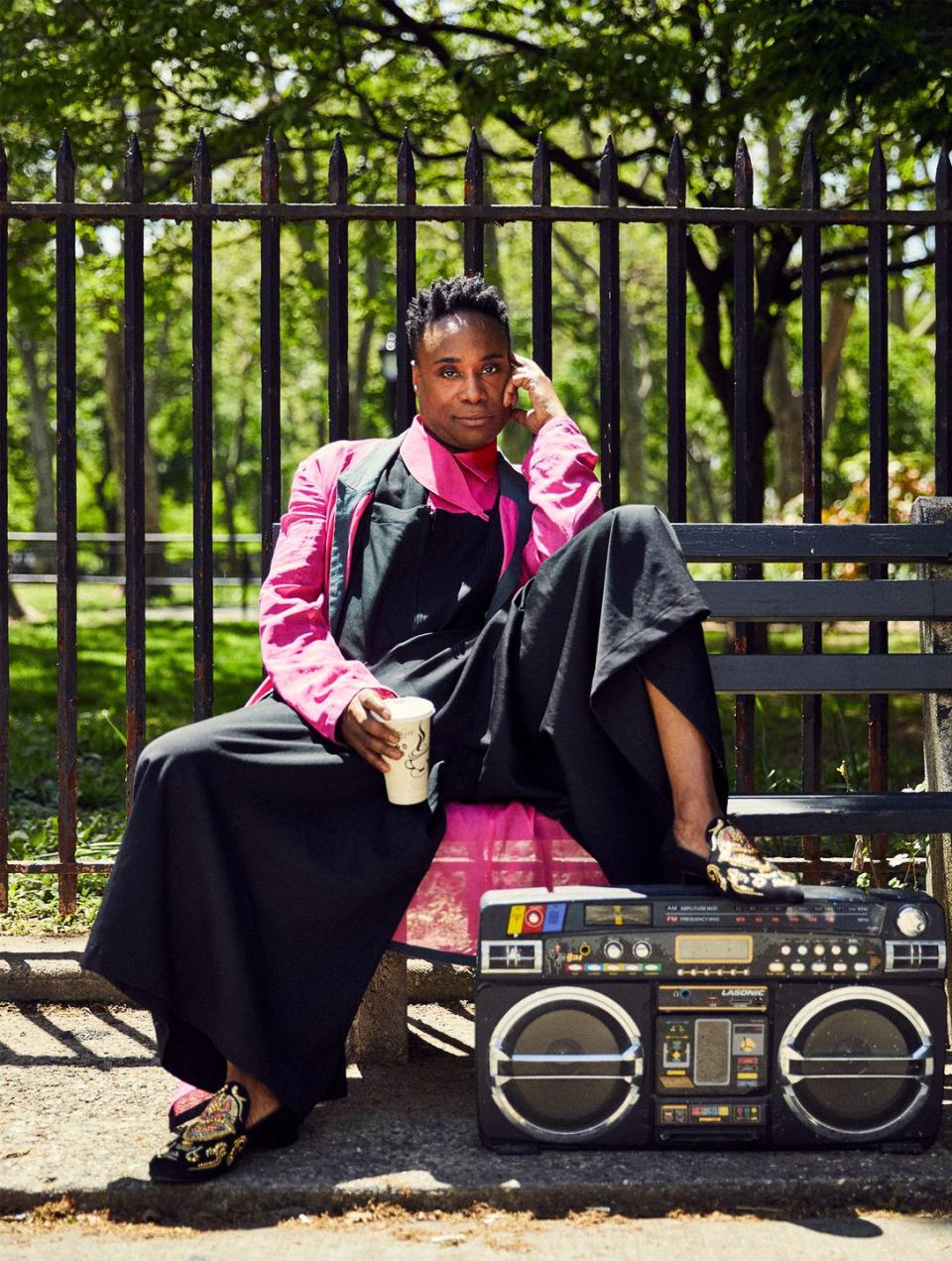
Billy Porter’s youth was defined by departures. At eleven, he left the pulpit after giving his one and only sermon at his hometown Pittsburgh church. At fifteen, he moved out of his house to live in a motel and work as a full-time summer entertainer at Kennywood Amusement Park. At seventeen, he escaped home permanently, leaving behind homophobia and an abusive stepfather, about whom he hasn't spoken much, until now.
It wasn't until this year that Porter became widely known for his arrivals. In February, he staged a mutiny on Oscars red carpet style when he showed up in a black velvet Christian Siriano tuxedo gown. In May, he lounged in gold from head to toe as six shirtless men hoisted him into the Met Gala on a chaise.
He’s a Tony and Grammy winner and, if the reviews are any indication, his turn as ballroom emcee Pray Tell in Ryan Murphy’s Pose could land him an Emmy nomination. Before any of that, however, on a Saturday afternoon in late May, he’s having eyeliner applied during an Esquire photoshoot, explaining his long road to a day like this. “It's been such a battle that I'm trying to remember to feel all this,” he recalls as he changes from a white jumpsuit to a black suit with a threaded red sash. “It's so joyful. It's so beyond anything that I could've ever imagined this thing looking like.”

Three decades after Porter’s career began, the people who once brushed him off for auditions are doing double takes. He’s caught the attention of fashion gurus with bold and stylish moments on the red carpet. And now that people are listening, he has a few things he’d like to share: memories of breaking free from abuse and his own doubt. Words about respect and acceptance. But most of all, what he's sharing makes one thing clear—Billy Porter didn’t evolve into this phenomenon. It took thirty years for the world to catch up.
The day before his photo shoot, he meets me at the members-only Soho House in New York. Dangling above us in the club's restaurant where we talk are chandeliers studded with jade green gems. It’s the kind of place an executive on Pose might visit to flaunt how far removed he is from the rest of the world. Porter greets me at the table, sporting a ruffled white blouse and slip-on loafers bedazzled with skulls. As soon as he hits the chair, the shoes come off and his feet go up onto the seat of the chair. His knees go every which way. (Throughout the interview, he'll move himself into a dozen different positions, never once in the manner someone is supposed to sit in a chair.)
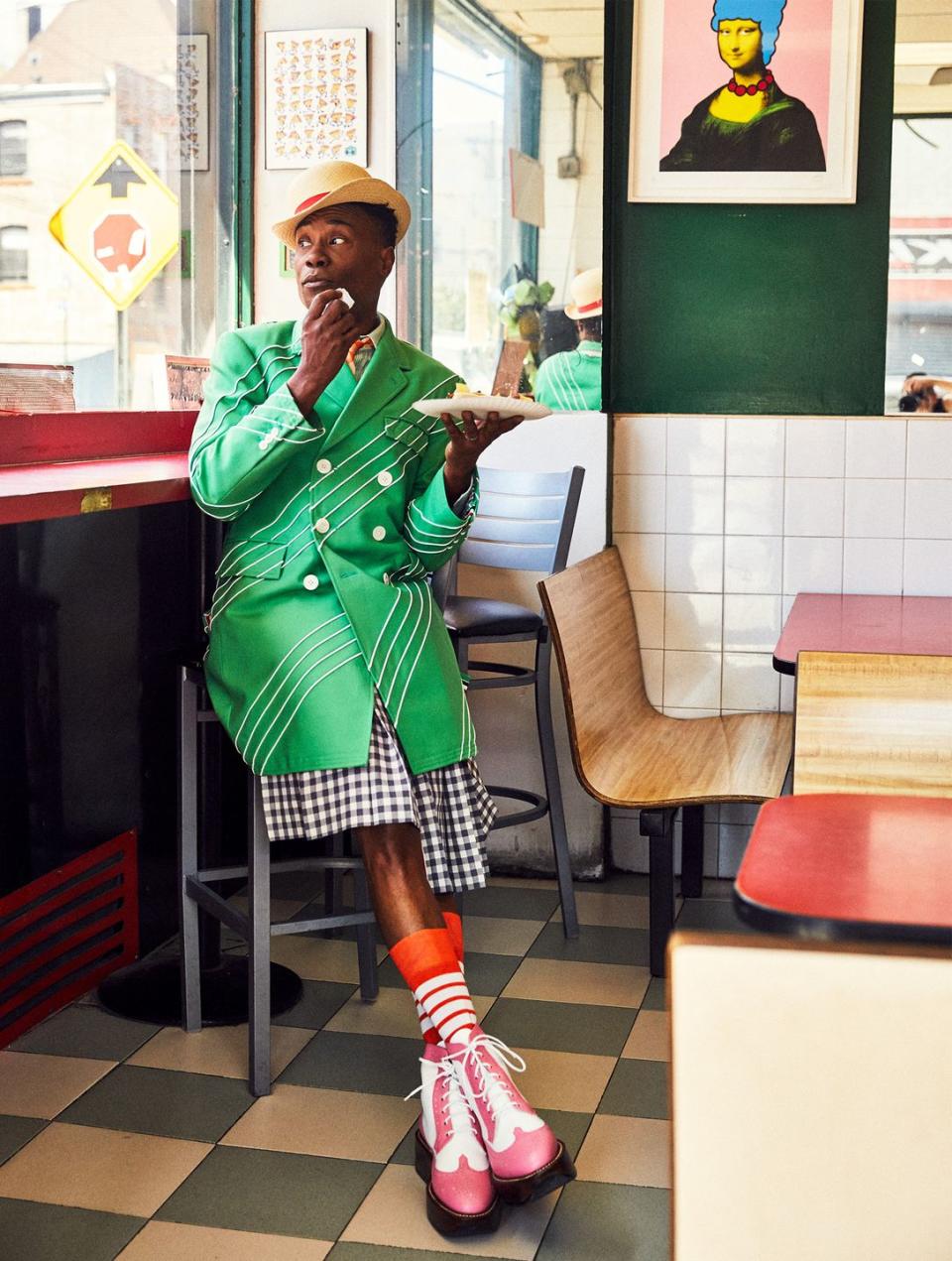
Porter's last six years read like a career-long resumé: In 2013, he originated the role of Lola, a drag queen and cabaret performer, in Broadway’s Kinky Boots, landing him his first Tony and Grammy awards. Soon after he penned an off-Broadway play. In 2017, he recorded an album of Richard Rodgers’ songs. (That same year he married Adam Smith, who co-owns the eyewear company Native Ken in New York.) Now he's starring in a critically acclaimed FX show that boasts the largest cast of transgender actors in television history. And yet, with all of that, it’s impossible to ignore the moment that thrust him into the mainstream. At the 2019 Academy Awards, Porter conducted interviews on the red carpet wearing a dress. And he looked damn good.
Several months later, in early May, he stunned on the Met Gala red carpet. As he described it, the look—that of a Sun God covered in gold jewelry—was Old Testament Realness: an emperor determined to collect the riches deprived him for thirty years. The celebrity of it all is nice, he explains, but that’s not particularly his end game. “In my naive youth, being a star was the goal because that's all you see,” he says. “That’s all you know. You don't realize that there are other components.” The other components are, in part, the opportunities to highlight LGBT issues that fame affords.
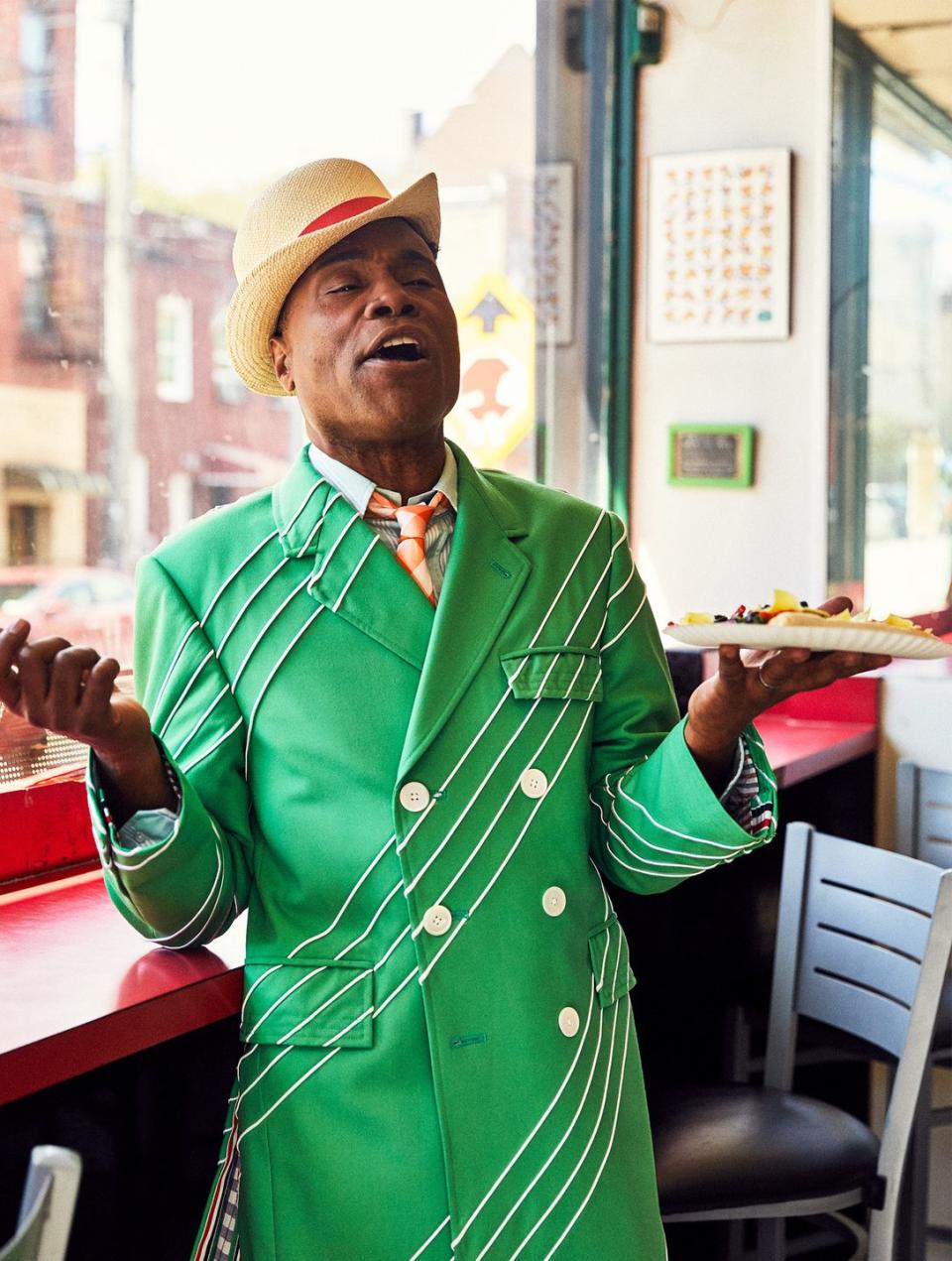
Porter explains that he’s been reading publications he loves less, including Esquire, because he doesn't see people like him being featured. “Even when LGBTQ stories started being told in the independent space and then in the mainstream, it was all white boys pretty much,” he says.
The acting, the red carpets, and the roles were all building toward something greater, according to Porter. “[Authenticity] is fully and truly a ministry for me,” he explains. “I want to minister to people who don't understand and change the trajectory of the world.”
Developing that authenticity started in East Liberty, a neighborhood of Pittsburgh where Porter lived with his sister, stepfather, and mother, who has an undiagnosed degenerative neurological condition that limits her mobility. Porter describes East Liberty as the type of community where lots of people don't have the money or resources to leave and see the world. But there was always God—a source of salvation for some. Not so much for others.
Long before he sashayed down a red carpet, Porter was a pastor. A baby pastor. He recalls the first and only sermon that he gave at the pulpit in Pittsburgh at eleven-years-old. “So many people felt something special—a special energy coming from me in my life early on. And it's immediately about ‘little preacher man.’ You're going to be a preacher. Because it's the only space that they understand a special energy like that.” Porter is many things, but a preacher he is not. The church has a funny way of doing that with exuberant young men who also happen to be gay. The pageantry and excitement left unchanneled could lead to unwanted questions, but if that radiance gets focused into ministry, it’s permissible. In other words: If you’re going to be flamboyant, at least do it for the Lord.
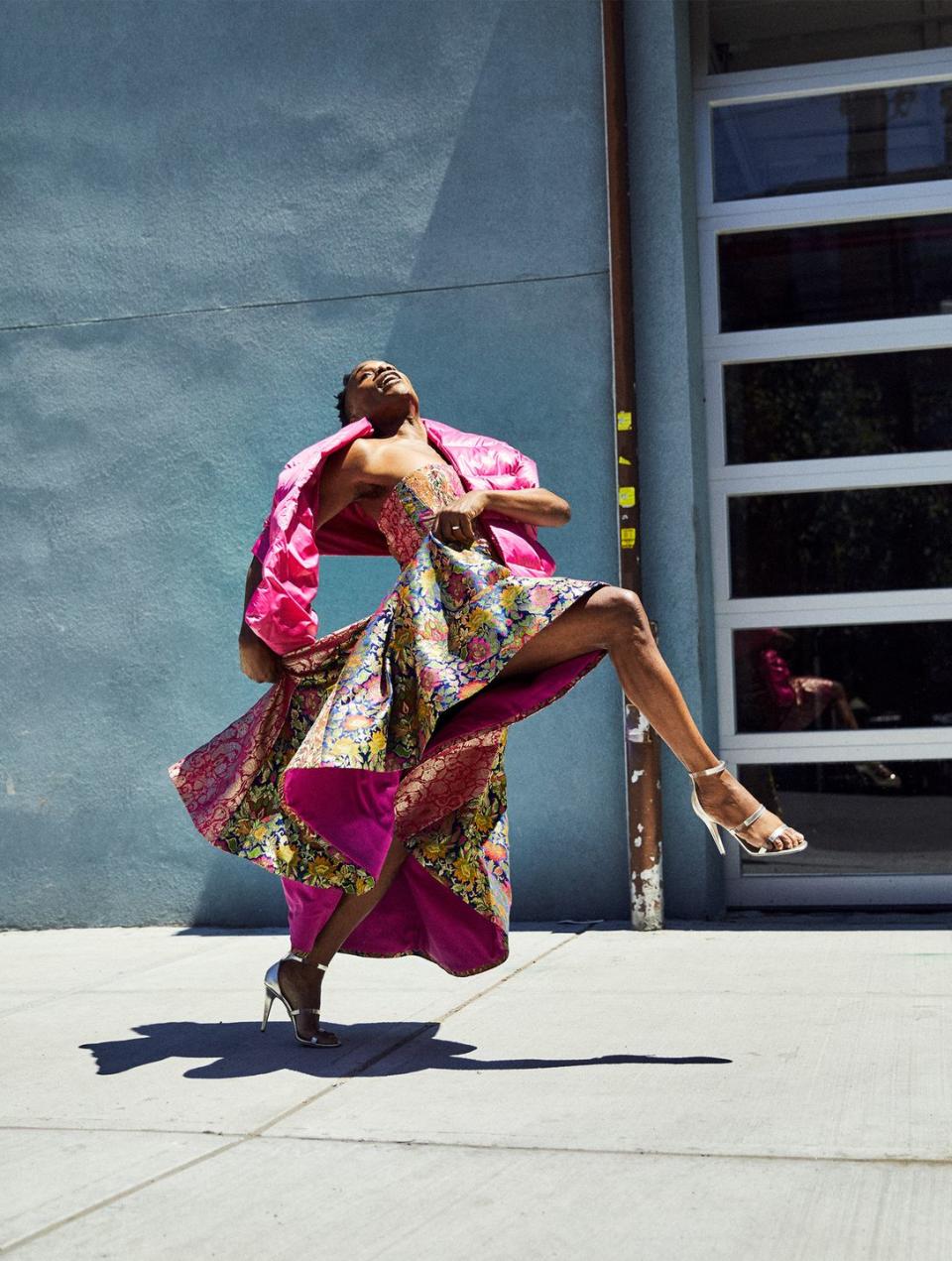
Porter has never done well adhering to sanctions though. Instead he took that inclination for the performative and applied it to the arts. “Growing up in Pittsburgh, [the arts provided] the group of people that embraced me and set me on the path to get out," he says, "to get out of the toxic environment that I was embedded in.” First he went to an arts high school, then Carnegie Mellon’s School of Art.
At first when we talk about his childhood, we only cover the basics. You know, church and school and family dynamics. He has a deep love for his mother, the “personification of what a real Christian means.” He has a complicated relationship with the self-proclaimed “ghetto” where he grew up. But much later in our conversation, well past the small talk, he breaks eye contact and looks out the window for a moment.
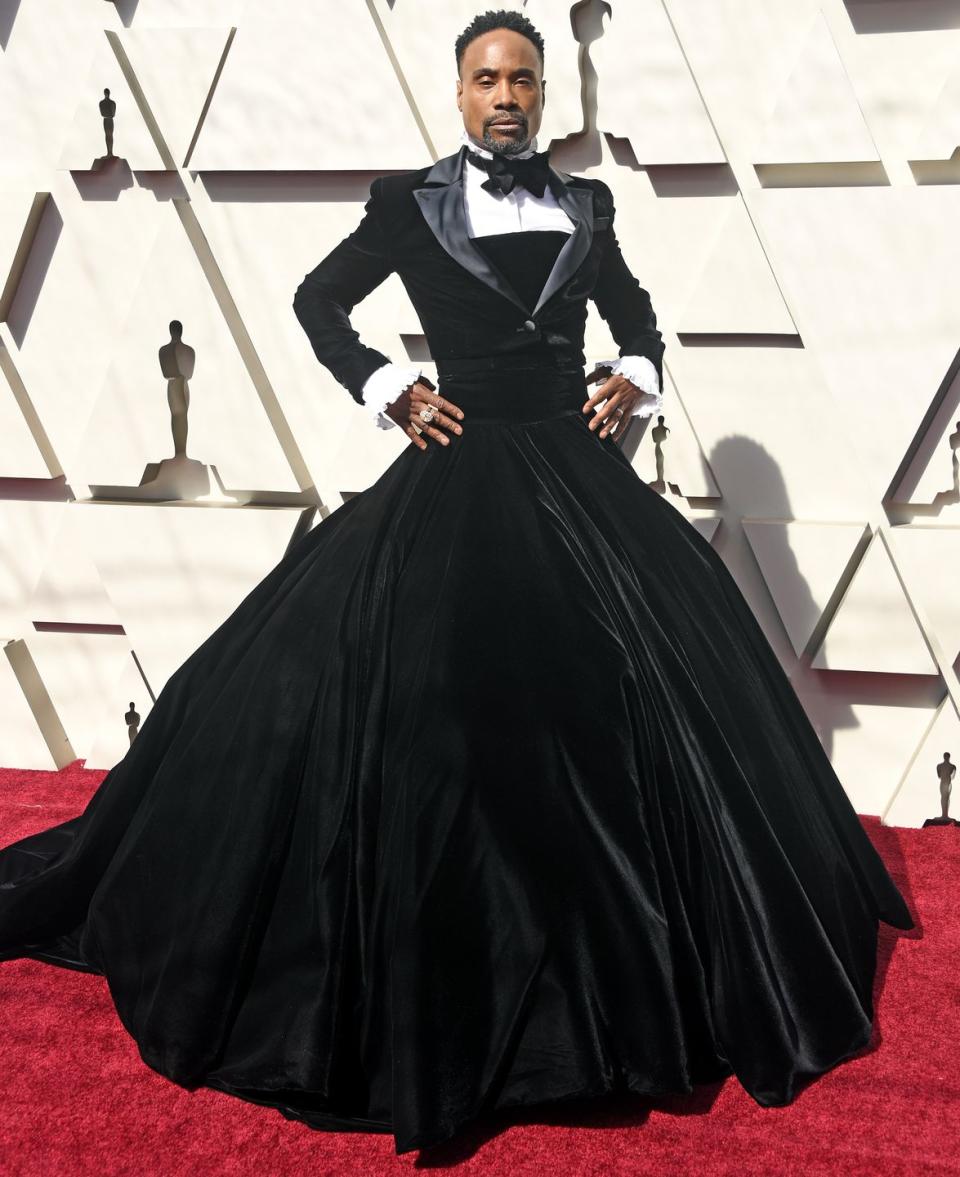
Up until then, every response was filled with unquestionable intention, as if he’d rehearsed his story for years. And of course he had. He’s a Thespian, after all. But he returns to his childhood with a bit of hesitance. “This is really deep. It’s not something that I've spoken about a lot,” he says. “But… the sexual abuse that I received at the hands of my stepfather from the time I was seven until the time I was twelve, weirdly, was the best thing that ever happened to me.”
For the first time in our conversation, his demeanor shifts a bit. Porter is first and foremost a performer, but in this moment, there’s a bit of sadness mixed in with his unwavering confidence. “At seven, at twelve, I could look around and see all of these adults with no capacity to do anything to help me. I knew there's not an adult around me that knows what the fuck to do. I will do it myself.” And so he did. He removed himself from the situation, getting a summer job at fifteen as an amusement park performer, living in a motel. He performed for three seasons, until he left for college.
These moments of abuse and abandon are unthinkable. Unexplainable, really. And yet from Porter’s perspective, empowerment bloomed from his isolation. “I was able to extract myself from that toxic energy without fear, without guilt. I wish that more young people ... I'm not saying go through abuse,” he explains. “I'm just saying that I wish more young people could get to the space of I don't need your tolerance, I don't need your acceptance. What I demand is your respect for my humanity.”
Soon after, his background in church evolved into something else. “It was like, Oh, so I'm going to hell but you've just ignored the whole thing that I've already been through." Instead of calling himself religious, he says that religion is man-made; spirituality is divine. And while heading to Carnegie Mellon and visiting New York didn’t remedy everything (as he notes, “marginalization is everywhere”), Porter has a surprisingly sensitive habit of recognizing the ways life could be more perilous. “So many don't have a path out,” he says of other children in similar positions.
Then his tone shifts again, and with it, the vibe of the room. He's back into performance mode. Elongating his neck and pursing his lips, he says, “Save yourself, children.” He doesn’t break eye contact this time. “Get out and save yourself.”
On Pose, Porter plays Pray Tell, a legendary emcee of the ballroom scene. The series follows an eclectic cast of queer men and trans women of color through New York City in 1987. To make ends meet, the characters take the best jobs they can find: nail technicians and sex workers and street hustlers. But at night they are royalty. In underground get togethers, houses (think “team,” but with a family vibe) gather to walk (or compete) in categories announced at the ball. The goal was to live the fantasy. And like every good party, it’s the host that keeps the spirit alive. That’s the job of Pray Tell.
Pose is the first mainstream show of its kind. Outside of documentaries like Paris is Burning or Kiki, ball culture has remained shrouded in mystery for a large segment of the population. While it thrived in the ‘70s, ball culture of the ‘80s was a place of salvation for queer people. New York City was in the throes of the AIDS crisis, one of many quiet villains in the FX series, yet the ballroom scene was thriving.
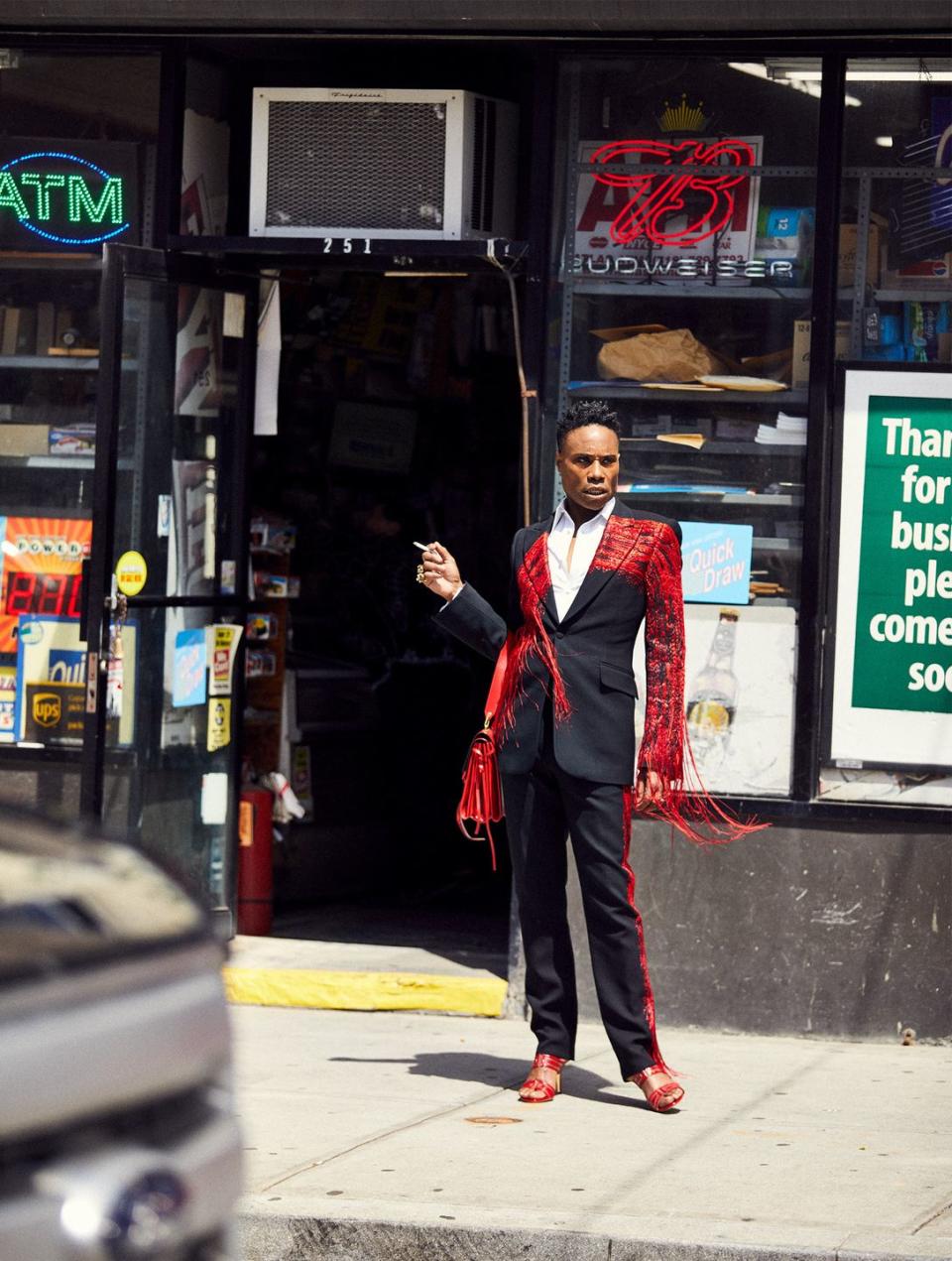
It’s a scene with which Porter is familiar, although he was never an actual ballroom emcee. In fact, he’s more like the Pose character Damon, who arrives to New York homeless in the series premiere. In 1987, both Porter and Damon were seventeen-years-old. They both grew up in Pennsylvania. Both were dancers. Both gay black men without much of a role model to follow. Both left home, though Porter corrects the comparison a bit. Damon was kicked out; Porter removed himself. But the most defining quality they share is that in the face of adversity, they both left for New York where one word changed their lives: pose.
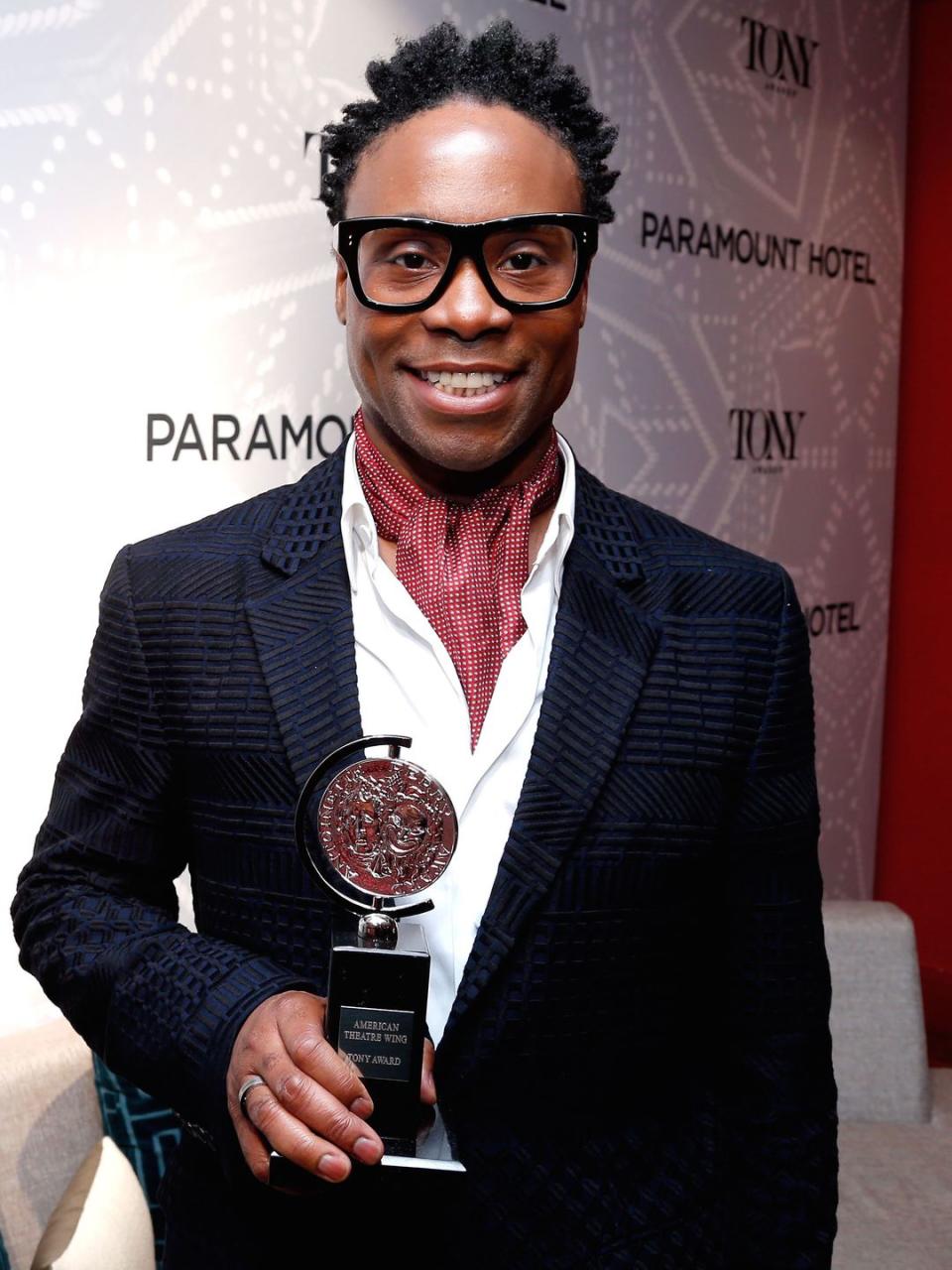
Granted, Porter started visiting New York his sophomore year of college, around 1990—the year when Season Two of Pose begins this month. That’s where Porter and Damon’s paths diverge though. While Pose’s Damon becomes entrenched in the ballroom scene, Porter was cast in the 1994 revival of Grease as Teen Angel to critical acclaim. Then there was off-Broadway. Then some off off-Broadway. Then nothing. The solution to the conundrum was also the problem—he wasn’t interested in characters depicting the traditional “masculine” man. Leaving Pittsburgh and his situation was part of becoming the man he wanted to be, not the man the world expected him to become. He wanted roles that represented what he saw in the mirror. But the number of meaningful parts for men who openly broke with norms of masculinity were limited.
He fans his hand around at me, saying, “I thought, ‘Oh, if I'm a star and I'm on covers of the magazines and everybody knows my name then I'll be loved. My mother will love me, my community will love me, my church will love me, my homosexuality won't be a problem.'” But even with the love of Pittsburgh and his church and his mother on the line, he realized that choosing success over craft wasn’t what his journey was about.
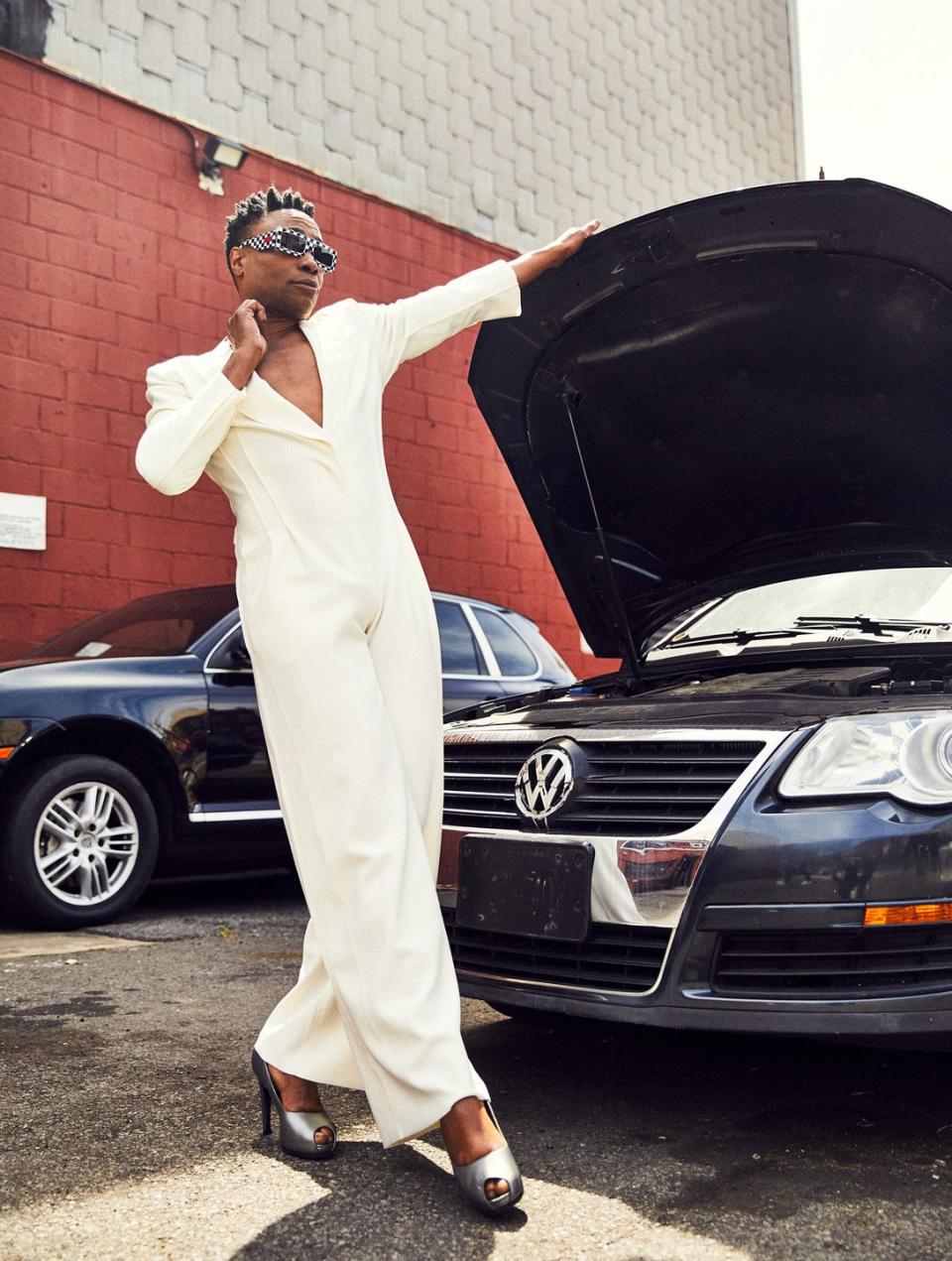
That is when Porter, wearer of ruffled shirts and bedazzled skull loafers, explains the concepts of authenticity and intention to me. “There's a difference between wanting to be a star and wanting to be an artist,” he says. “And that was something that became very clear and defined in my mid-to-late twenties.” To be fair, he credits Oprah with his initial lessons about intention, but the authenticity stuff is all him. His authenticity—his ministry—took precedent. And as an artist, he wanted to do something remarkable with his craft.
He took that mentality and spread it around. Before they ever shared scenes together as Blanca and Pray Tell, actress MJ Rodriguez worked with Porter on the 2011 off-Broadway revival of RENT. She had just started medically transitioning when she auditioned for the role of Angel. He was associate directing. She tells me that Porter and the show's director, Michael Greif, “were really the only ones vocal about uplifting me. I went into rehearsal mode and Billy was just like, ‘Yas! Yas! Yas!’”
“That is the best thing to receive from someone in the community," she continues. "But I was a young unknown trans individual at the time. No one knew my tea except for me, and I just felt like he was there for me. He saw me.” Their friendship grew as Rodriguez matured as an actress and Porter saw it all. “He’s been very much like a family member, a mentor, everything under the sun—he’s been that for me,” she says.
Porter's most public opportunity to spread his message was after he landed the part of Lola in 2013’s Kinky Boots on Broadway. As he thought about the ways to bring Lola to life, he considered the men in culture he’d seen don dresses before. Mrs. Doubtfire and Madea and Tootsie all had something in common: they could be laughed at because the audience knew the dress would come off and the man under it would be “normal” again.
“For me having gone through all of the things that I went through in my life—choosing myself, choosing my sanity over my fame, choosing my authenticity and taking all the hits that come with that to finally get my shot—to be starring in a Broadway show as a drag queen and say that that character is straight would be irresponsible of me.”
So he made Lola gay. Super gay. And he won a Tony.
In 2019, we call that brave. But 25 years ago, moves like that would only be permissible on the fringes of culture, far from the mainstream's fragile depictions of gender. Billy Porter has always been Billy Porter, after all. A shift in taste has only recently deemed his aesthetic worthy of attention. “We throw around these words: the authenticity space, the inclusivity space, equality. Many of us believe in those things when it's convenient and it serves us. The moment you're presented with something... an authenticity that you don't understand and/or you don't like, then your acceptance of it is out the fucking window.”

While the industry catches up to Porter, he continues to look ahead. It’s not so dissimilar from Pray Tell's journey when Season Two picks up. While it’s Pray Tell’s voice that opens up each episode with the same refrain—Live! Work! Pose!—it’s not his character’s journey last season that interests Porter most. He’s intrigued by where Pray Tell is going. In Season One, the emcee was diagnosed with HIV. When Season Two begins, the timeline jumps three years ahead, the day Madonna’s “Vogue” is released.
“I know Pray Tell becomes an activist, so we get to see that side of him,” he explains. “And I get to funnel my real, everyday rage into something that feels productive.” It’s that truth that drove him to Pose in the first place. The series tells a complex narrative about trans lives, queer culture, and the AIDS crisis without making it “LGBTQ tragedy porn.” Pose is both a TV series and a conversation—a culmination for Ryan Murphy: a white, cisgender man who raised eyebrows by undertaking a show about primarily trans women of color. Porter would like to evangelize you with his opinion on that, too.
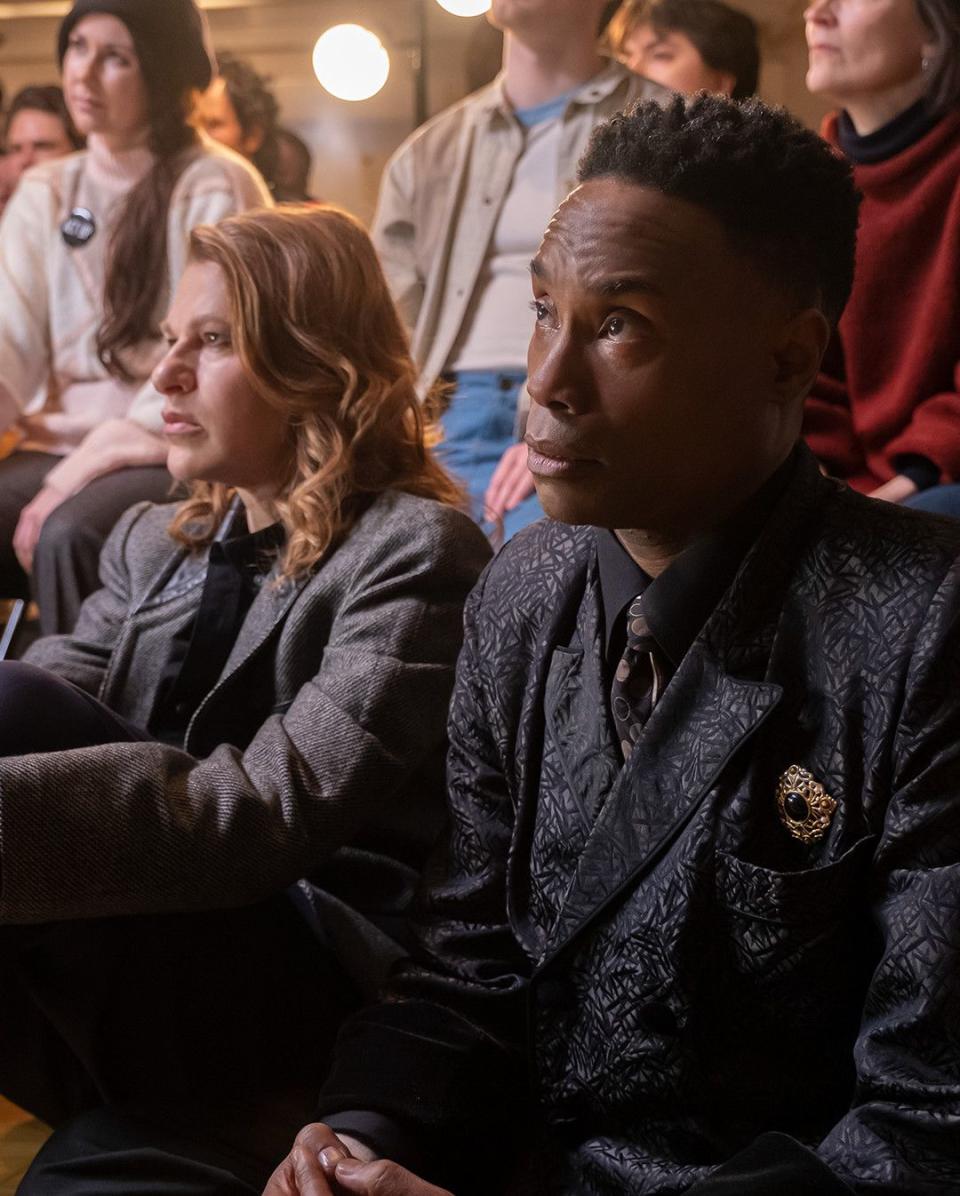
“[Ryan] is not trying to look at a community and tell it himself. He's like, ‘I have the name to get it on the air. Okay, now let me see who I should hire to make sure that the story is told properly.’” Murphy brought on trans activist and author Janet Mock as an executive producer to work on the series with the show’s creator, Steven Canals, whose concept was rejected more than 150 times. “I remember when we first started it's like, Why is this white man telling it? It's like, well the black people wouldn't. And he's bringing the right people around him and giving all of the proceeds back to the community. So shut the fuck up.”
This role and the acclaim that comes with his major celebrity status is a long time coming, but Porter reminds me four times that he does not want to seem like he’s filled with hubris. I try to explain that if he were to be a little prideful, that would be fine. I encourage it, because nothing is more entertaining than when Porter goes into performance mode a foot and a half away from you. But he’s not great with rules. Instead, he asks me to name an out, black, gay leading man. I tell him I can’t think of one. He can’t either. He looked for one growing up his entire life and it was never there. “[Ryan Murphy] made me a black, gay, out leading man,” he says. His face, for once, is without expression.
At the photo shoot, everyone notices that Porter is fast. So fast that he’s changed in and out of five fashion looks, posed in them, and is now asking, “What’s next?” For good measure, he’s milking his last one: a Prabal Gurung dress that floats in the air like a parachute when he kicks it out. The sun catches the fabric and it shimmers, revealing an ornate pattern. The dress Porter is wearing is a tapestry—a type of fabric that was designed to tell a story. He is lost in the moment, marching and contorting his face into dramatic shapes. From the sidewalk, a photographer shouts, “Nipple!”
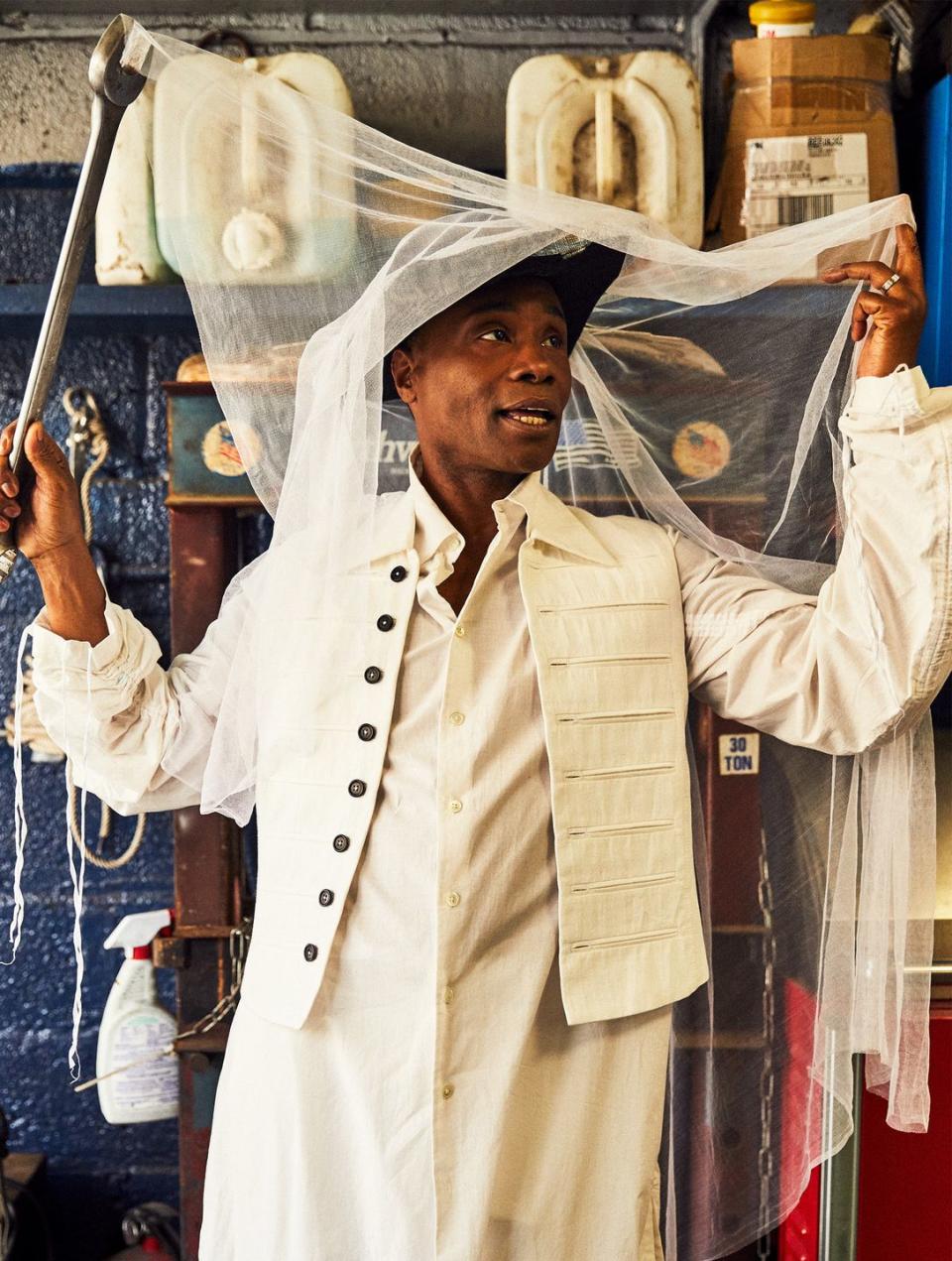
Porter shoves his hands inside the bodice of the dress, pulling it back up over his chest. As though God willed it, “We Are Family” blares from a portable speaker and he immediately starts singing. Parading before us, he’s sending a message. He’s a perfectly complex amalgamation of masculinity and femininity, all wrapped up in one tapestry. The performance of it all is half the point; that’s how conversations get started.
The day before at the Soho House, he explains that wearing dresses is about more than just looking fierce on the red carpet. Yes, his Christian Siriano gown landed him on a slew of Oscars best dressed lists, but the end game is so much bigger than that. “LGBTQ narratives and stories and archetypes are initially very performative, right?" He says. "So you make the statement. What I'm interested in is the conversation that comes after the statement.”
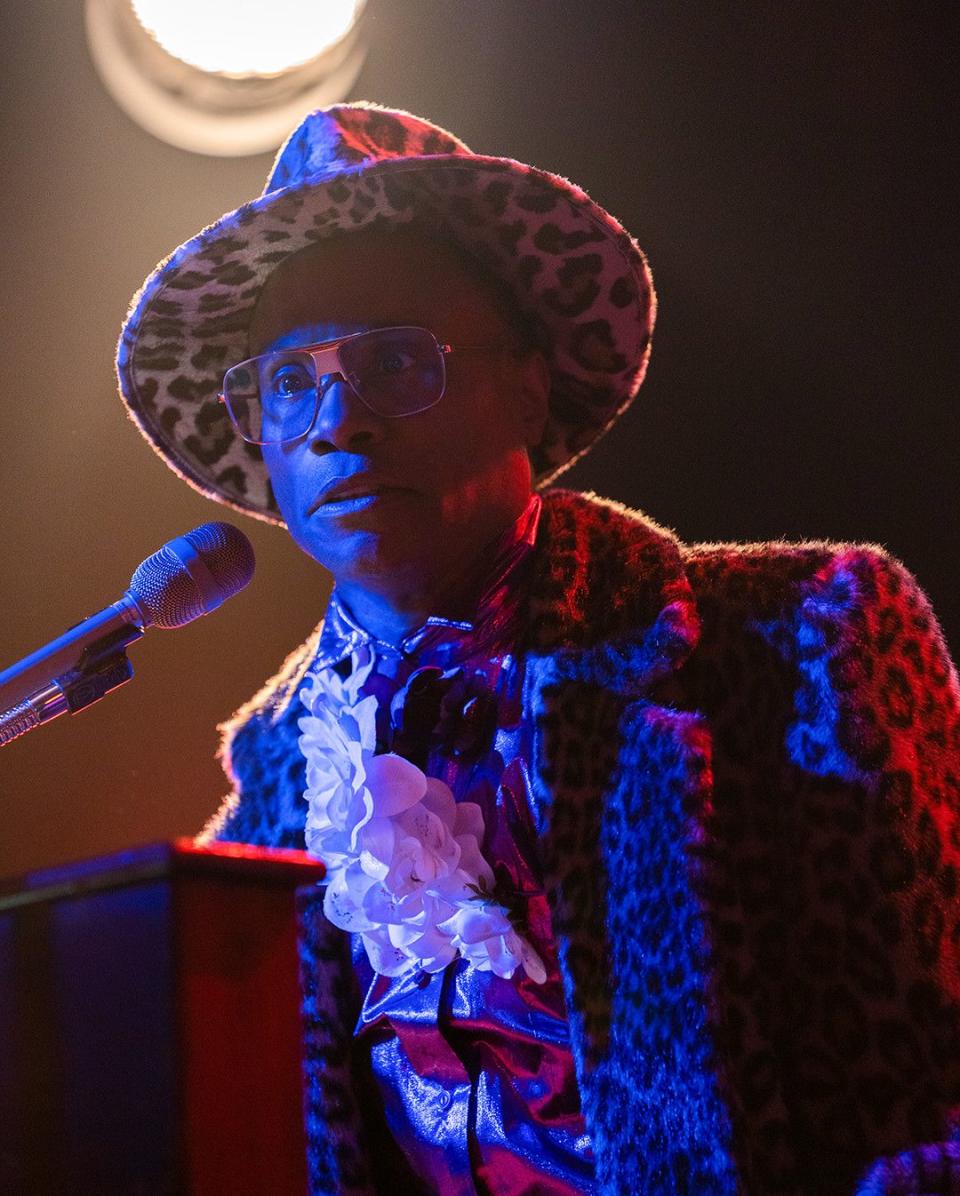
With an increasingly louder tone, he announces to me and no one in particular, “I'm done with teaching moments for people who don't want to learn nothing. I’m done!” I promise him that I want to learn. I lead with that because I’m about to ask what conversation he’s trying to have, and though I can’t imagine he would, I don’t want Porter to yell at me for being dense.
“If you're a woman wearing pants, you're inside of the standard, and that's cool. But if a man decides to put on female clothes, it's disgusting. So what are we saying? Once again, male is better and female is disgusting. And I'm not having any of that anymore. I'm done!” he says. By now, I have discovered that the phrase "I’m done" is nitrous for Porter. It means the opposite. It’s a war cry.
“My masculinity is in question because masculinity is better? Fuck that, it ain't.” He takes a big sip from his second Picante De La Casa, a tequila drink that's a Soho House speciality, and raises his eyebrows at me to make sure I heard him. I write “fuck that it ain’t” in my notebook as a reminder. Unlike other men who play with gender on the red carpet, he’s not trying to blur the lines of gender norms. He wants to fully subvert them. “Do you go to bed masculine?” he asks me. It’s not rhetorical. “You can't truly be masculine outside of the performative version of masculinity that the world requires.”
His feet come out of the chair for him to stretch as he continues. He throws his knees to one side, then pulls his feet back into the chair. “I wanted to make it clear. As a man, I am choosing to wear a dress. I'm not obscuring it with being a drag queen—no shade. That's a different journey.” Those closest to him got it immediately. MJ Rodriguez recalled a story that Porter has told multiple times over. “One day he would wear ball gowns to the Oscars. He said he didn’t fully believe it, but he hoped he’d do it one day.” But what started as a dream evolved. “It’s a statement, It’s a movement.”
Mid-sermon, Porter retreats for a moment. Before moving forward, he wants to confirm with me that he’s a cisgender, gay man. “I'm still trying to figure out all these new terminations,” he admits. It’s a quality we lack in the world right now. Often we stand with our pointed finger at the ready, uninterested in checking ourselves. He never claimed to be perfect, and as he nears 50 years old, he realizes that he still has things to learn. He has plenty of opportunity to do it on the set of Pose.
“I think he’s learned a lot for me, as far as me growing as a young woman in a world where a lot of people don’t understand,” Rodriguez explains. “It was the most beautiful thing because I wouldn’t have asked for anyone else except for him to be that person.”
The feeling is mutual, as far as Porter is concerned. “I feel so blessed and lucky to be a part of the generation that kicked the door down,” he says. “I also get to walk through the door and fly away.”
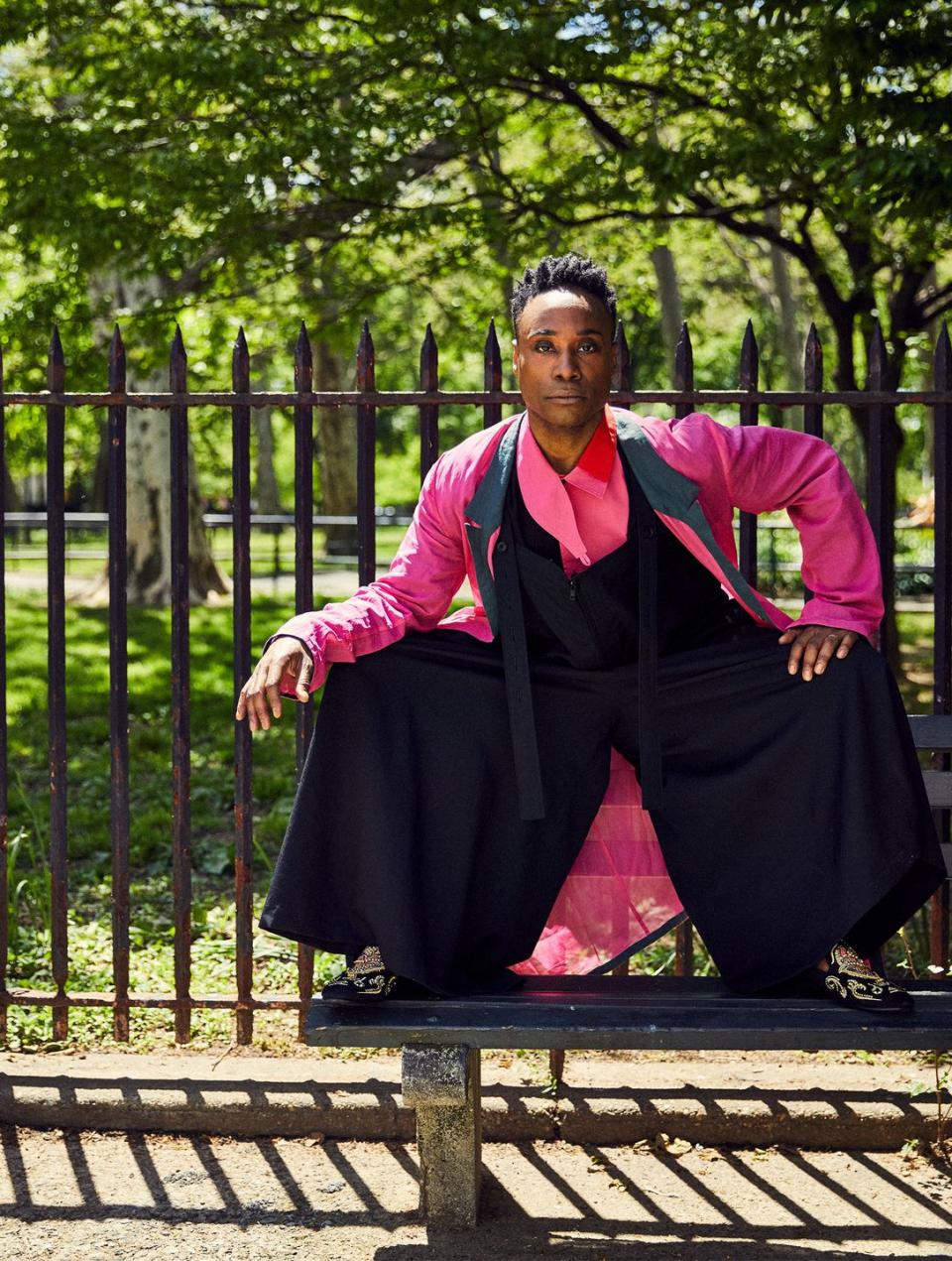
Pushing the boundaries; wearing the dresses; kicking the tapestry into the sun—it’s all about making sure the ball stays rolling. “When I learned history in school, there were books and books and books about white people,” he recalls. “And three pages about the Civil Rights movement. I didn't learn anything about my history in school. Knowing your history is empowering.” He’s acutely aware that he’s creating history, too. But this journey for Porter is as much about teaching history as it is creating it.
He leans over within kissing distance of my face, putting his hands on my knees and says, “Eternal vigilance is the price of liberty. Repeat after me. Eternal vigilance is the price of liberty. That's what Frederick Douglass said and that is the truth.”
As our conversation comes to a close, I realize that we have covered a lot. When you spend 30 years without too much of an audience, you collect all the things you want to say and you say them out loud as often as you’re allowed. You lead repetitive chants of Frederick Douglass quotes and you say “fuck” a few times at a decibel some might not feel is appropriate under the watchful eye of jade green chandeliers. But you say it because you’ve been waiting your whole life to say it, and if the right person hears you, your words can live on forever.
Still leaned over, he stares directly into my eyes. I say it: eternal vigilance is the price of liberty. He leans back in his chair, his face content from spreading the truth.
As the photo shoot comes to an end, I consider Porter’s imminent departure. There are only a few more shots before he’s off to his next engagement, but I imagine on this Saturday that if he spins hard enough in this dress, he might fly away. That he will defy physics and just lift off toward the sun. All that will be left is scorched earth and the story of this man who couldn’t help but stand out. Couldn’t help but stubbornly push for something that felt true to him. Couldn’t take no for an answer.
They’ll talk about him and his authenticity. His affinity for the word fuck. The way he brought his own shoes to a photo shoot, including the heels he said “made him feel grounded for the first time in his life.” Perhaps someone will write his story down and call it the Gospel of Billy and then one day, it will be portrayed on a tapestry that will catch the sun when a boy kicks his dress skirt out. Perhaps no one will notice.
“Nipple!”
Porter pulls his dress up over his chest again. In this moment, he is neither arriving nor departing. He has a job to do. And bitch, he’s going to pose.
Writer: Justin Kirkland
Editor: Matt Miller
Casting: Randi Peck
Stylist: Aya Kanai
Grooming: La Sonya Gunter
Style Director: Jonathan Evans
Photographer: Allie Holloway
Page Designer: Mike Kim
Additional Editing: Michael Sebastian, Ben Boskovich, Gabrielle Bruney
Special Thanks to TKO Auto Services and Vinnie’s Pizzeria
You Might Also Like

